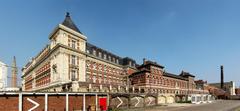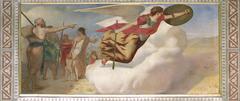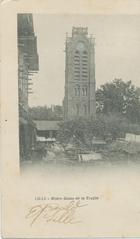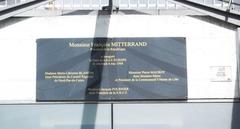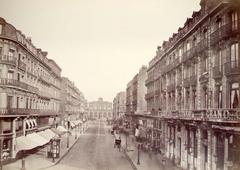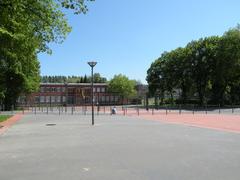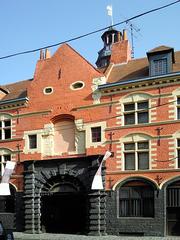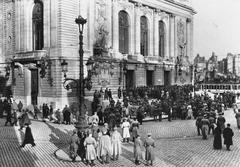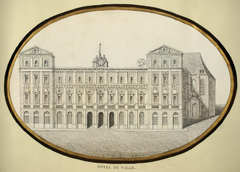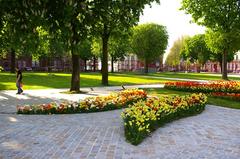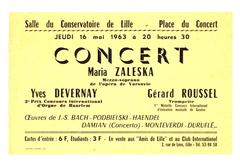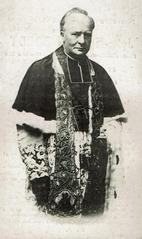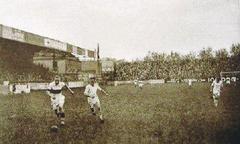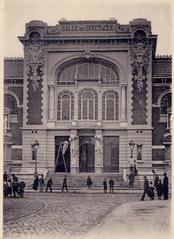Complete Guide to République Beaux-Arts Lille: Visiting Hours, Tickets, and Attractions
Date: 04/07/2025
Introduction
Nestled in the heart of Lille, France, the République - Beaux-Arts district represents the city’s 19th-century urban expansion and its enduring cultural vibrancy. Anchored by the renowned Palais des Beaux-Arts de Lille—one of France’s most significant fine arts museums—this area is a prime destination for art lovers, history enthusiasts, and travelers seeking an immersive cultural experience. The district’s elegant Belle Époque and Beaux-Arts architecture, lively public spaces, and convenient transport links make it both a historical treasure and a vibrant urban hub (Lille Tourism; POP Culture).
This guide offers a comprehensive overview of the district’s history, practical visitor information, artistic highlights, events, accessibility, and recommendations for making the most of your visit.
Contents Overview
- Historical Development
- Urban Expansion and Architectural Vision
- Creation of the Palais des Beaux-Arts
- Practical Visitor Information
- The Square as a Civic and Cultural Hub
- Cultural Significance and Artistic Heritage
- The Palais des Beaux-Arts: Collections and Exhibitions
- Contemporary Culture and Events
- The District’s Role in Lille’s Identity
- Preservation and Recognition
- Key Events and Contemporary Relevance
- Major Exhibitions and Festivals
- Social and Educational Impact
- Frequently Asked Questions (FAQ)
- Key Attractions and Visitor Experience
- Architectural Highlights
- Art Collections
- Visiting Hours and Tickets
- Visitor Experience and Accessibility
- The District and Nearby Attractions
- Practical Tips and Recommendations
- Transport, Accessibility, and Amenities
- Getting There
- Parking and Low Emission Zone
- Visitor Services
- Recommended Itineraries
- Summary and Visitor Recommendations
- Sources
Historical Development of République - Beaux-Arts District
Urban Expansion and Architectural Vision
The République - Beaux-Arts district embodies Lille’s transformation during the 19th century, following the annexation of neighboring communes in 1858. To connect these new neighborhoods with the historic city center, Place de la République was conceived as a grand civic square, anchoring the area’s urban design (Lille Tourism).
The district’s architecture features an eclectic mix of Belle Époque, Neo-Renaissance, and Beaux-Arts styles—most notably in the monumental facades of the Préfecture du Nord (1865) and the Palais des Beaux-Arts (1892), which stand opposite each other on the square. This grand arrangement symbolizes the union of administrative authority and cultural achievement (POP Culture).
The Creation of the Palais des Beaux-Arts
Founded in 1809, the museum originated from a decree by Napoleon Bonaparte, aiming to democratize access to art in regional cities (Nomads Travel Guide). Outgrowing its original premises in the Récollets convent, the museum moved to its current Belle Époque building, designed by Édouard Bérard and Fernand Delmas and inaugurated in 1892. The result was a grand structure that immediately established itself as a major French museum (POP Culture; Lille Tourism).
Practical Visitor Information
- Visiting Hours: Open Tuesday to Sunday, 10:00 AM – 6:00 PM. Closed Mondays and some holidays. Extended hours on certain Thursdays and special events—check the official website for updates.
- Tickets and Prices: Standard admission: €7; reduced rates for students, seniors, and groups; free for visitors under 18 and on the first Sunday of each month. Special exhibitions may require a separate ticket.
- Accessibility: Wheelchair accessible, with elevators, ramps, and adapted restrooms.
- Getting There: Reachable by metro (République - Beaux-Arts station), bus, tram, or a 10-minute walk from the city center.
- Best Times to Visit: Weekday mornings or late afternoons for a quieter experience.
The Square as a Civic and Cultural Hub
Place de la République is a symbolic and functional center for civic life, hosting public gatherings, festivals, and demonstrations. Its tree-lined promenades and stately buildings reinforce its role as a cultural and social hub (Lille Tourism).
Cultural Significance and Artistic Heritage
The Palais des Beaux-Arts: Collections and Exhibitions
As France’s second most important fine arts museum after the Louvre, the Palais des Beaux-Arts de Lille houses over 72,000 works, including masterpieces by Rubens, Van Dyck, Delacroix, Goya, Rodin, Claudel, and Carpeaux. Its collection spans European painting, sculpture, ceramics, drawings (notably 40 sheets by Raphael), and unique 18th-century relief maps showcasing fortified cities (Lille.fr; Lille Tourism).
Contemporary Culture and Events
Beyond its permanent collections, the museum hosts dynamic temporary exhibitions, cultural events, and educational programs. Highlights include the 2025 “Fêtes et célébrations flamandes” exhibition, developed in partnership with major European museums (PBA Lille). The museum also offers mediation spaces, workshops, and digital tools to promote accessibility (PBA Lille Information).
The District’s Role in Lille’s Identity
République - Beaux-Arts is often called Lille’s “Latin Quarter,” home to educational and cultural institutions. Its intellectual vitality, vibrant café scene, and architectural beauty contribute to Lille’s cosmopolitan reputation (Lille Tourism).
Preservation and Recognition
The Palais des Beaux-Arts was designated a historic monument in 1975, and Lille holds the “Ville d’art et d’histoire” label since 2004. Recent restorations (notably in 1997) ensure the district remains a vibrant hub for art and community (Nomads Travel Guide).
Key Events and Contemporary Relevance
Major Exhibitions and Festivals
The district’s calendar features events such as the lille3000 festival, attracting international artists and visitors. The 2025 edition includes the “Fiesta” theme and major exhibitions at the museum, fostering Lille’s role as a cultural crossroads (Lille Evous).
Social and Educational Impact
The museum’s educational workshops, tours, and outreach initiatives make art accessible to all. Collaborative programs with local and international partners strengthen Lille’s social and cultural fabric (PBA Lille Information).
Frequently Asked Questions (FAQ)
Q: What are the Palais des Beaux-Arts Lille visiting hours?
A: Tuesday to Sunday, 10:00 AM–6:00 PM; closed Mondays and select holidays.
Q: How much do tickets cost?
A: Standard €7; reduced rates available; free for under 18s and on the first Sunday of the month.
Q: Is the museum accessible?
A: Yes, it is wheelchair accessible and provides adapted facilities.
Q: How do I get there?
A: Via République - Beaux-Arts metro station, bus, tram, or on foot from the city center.
Q: Are guided tours available?
A: Yes, in multiple languages, with audio guides and family-friendly options.
Q: Where can I buy tickets?
A: Online, at the museum entrance, or via the official website.
Key Attractions and Visitor Experience
Architectural Highlights
The Palais des Beaux-Arts de Lille, with its grand 19th-century façade and elegant interior, stands opposite the Préfecture du Nord on Place de la République. The surrounding district showcases Belle Époque charm and symmetrical urban planning.
Art Collections
- European Paintings: Rubens, Van Dyck, Goya, Delacroix, Raphael (source).
- Sculptures: Rodin, Claudel, Carpeaux.
- Relief Maps: 17th-century fortified towns.
- Ceramics and Decorative Arts: Spanning several eras.
Visiting Hours and Tickets
- Regular Hours: Tuesday–Sunday, 10:00 AM–6:00 PM.
- Extended Hours: Some Thursdays until 9:00 PM.
- Tickets: €7 standard, reductions available, free for under 18s/EU residents under 26 (source).
Visitor Experience and Accessibility
- Services: Guided tours, audio guides, mediation spaces.
- Accessibility: Elevators, ramps, adapted restrooms, tactile/audio guides.
- Amenities: Cloakrooms, restrooms, museum shop, and café.
The District and Nearby Attractions
- Place de la République: Civic square with statues and open spaces.
- Vieux Lille, Grand Place, Vieille Bourse: All within walking distance (source).
- Parc Jean-Baptiste Lebas: Green space nearby.
- Théâtre Sébastopol and concert venues: For evening events.
Practical Tips and Recommendations
- Buy tickets online to avoid queues.
- Lille City Pass offers combined museum entry and public transport savings.
- Visit early or late afternoon for fewer crowds.
- Check the events calendar for temporary exhibitions or festivals.
- Dine at local estaminets for regional cuisine.
Transport, Accessibility, and Amenities
Getting There
- By Metro: République - Beaux-Arts station (Line 1).
- By Rail: Lille-Flandres and Lille-Europe stations, 10–15 minutes away.
- By Air: Lille-Lesquin Airport, 20 minutes by shuttle or taxi (MobiLille; Ilevia).
- By Bike: V’Lille bike network has stations near the museum.
Parking and Low Emission Zone
- Parking: Underground parking at Place de la République; limited street parking due to emission controls.
- Low Emission Zone (ZFE-m): Plan to use park-and-ride facilities outside the city center.
Visitor Services
- Tourist Information: Available at Place Rihour and Place de la République during major events.
- Nearby Dining and Shopping: Estaminets, cafés, bakeries, boutiques, and supermarkets within walking distance.
- Accommodation: Ranges from budget hotels to boutique stays.
- Public Facilities: Free Wi-Fi, accessible restrooms, and ATMs.
Recommended Itineraries
Half-Day Cultural Immersion
- Morning: Visit the Palais des Beaux-Arts.
- Lunch: Try a local café or estaminet.
- Afternoon: Walk to Grand Place and Vieux Lille.
Full-Day Art and Heritage Tour
- Morning: Guided museum tour.
- Midday: Explore Place de la République and tourist office.
- Afternoon: Visit Vieille Bourse, Parc Jean-Baptiste Lebas, and shops.
- Evening: Dinner and, if possible, a show at Théâtre Sébastopol.
Family-Friendly Discovery
- Museum visit with family activities.
- Lunch at a nearby bistro.
- Park time or child-friendly walking tour.
Summary Table: Key Transport and Accessibility Facts
| Mode/Facility | Details |
|---|---|
| Metro | Line 1 (République - Beaux-Arts), elevators, check for service updates |
| Tram/Bus | Multiple lines; replacement buses during metro interruptions |
| Park-and-Ride | 12 sites, 5,500+ spaces, connected to metro/tram |
| Bike Rental | V’Lille, 2,200 bikes, 223 stations |
| Airport | Lille-Lesquin, 10 km, 20 min by shuttle/taxi |
| Accessibility | Elevators, step-free museum access, tactile/audio guides |
| Tickets | €1.80 single, €5.00 day pass, City Pass available |
Conclusion
République - Beaux-Arts and the Palais des Beaux-Arts offer a compelling blend of artistic grandeur, vibrant urban life, and visitor-friendly amenities. Whether you’re drawn by world-class art, historical architecture, or lively cafés, thorough planning ensures a rewarding visit. Download the Audiala app for audio guides and the latest updates, and consult official resources for current hours and events.
Visuals and Interactive Media
Explore a virtual tour of the Palais des Beaux-Arts here.
Related Articles
- Top Historical Sites to Visit in Lille
- Discover Lille’s Latin Quarter: Culture and History
- Guide to Lille’s Major Museums and Galleries
Sources and Further Reading
- Visiting the Palais des Beaux-Arts in Lille: History, Tickets, Hours & Travel Tips, 2025, Lille Tourism (Lille Tourism)
- POP Culture, Palais des Beaux-Arts de Lille, 2025 (POP Culture)
- Nomads Travel Guide, Palais des Beaux-Arts Lille, 2025 (Nomads Travel Guide)
- Lille.fr, Palais des Beaux-Arts de Lille, 2025 (Lille.fr)
- PBA Lille, Information and Exhibitions, 2025 (PBA Lille Information)
- Lille Evous, Palais des Beaux-Arts Exhibitions, 2025 (Lille Evous)
- The Tourist Checklist, Things to Do in Lille, 2025 (The Tourist Checklist)
- MobiLille Metro Info, 2025 (MobiLille)
- Ilevia Public Transport App, 2025 (Ilevia Public Transport App)
- Palais des Beaux-Arts Official Website, 2025 (Palais des Beaux-Arts Official Website)
- Lille Tourism Official Site, Grand Départ of Tour de France 2025 (Lille Tourism Official Site)
